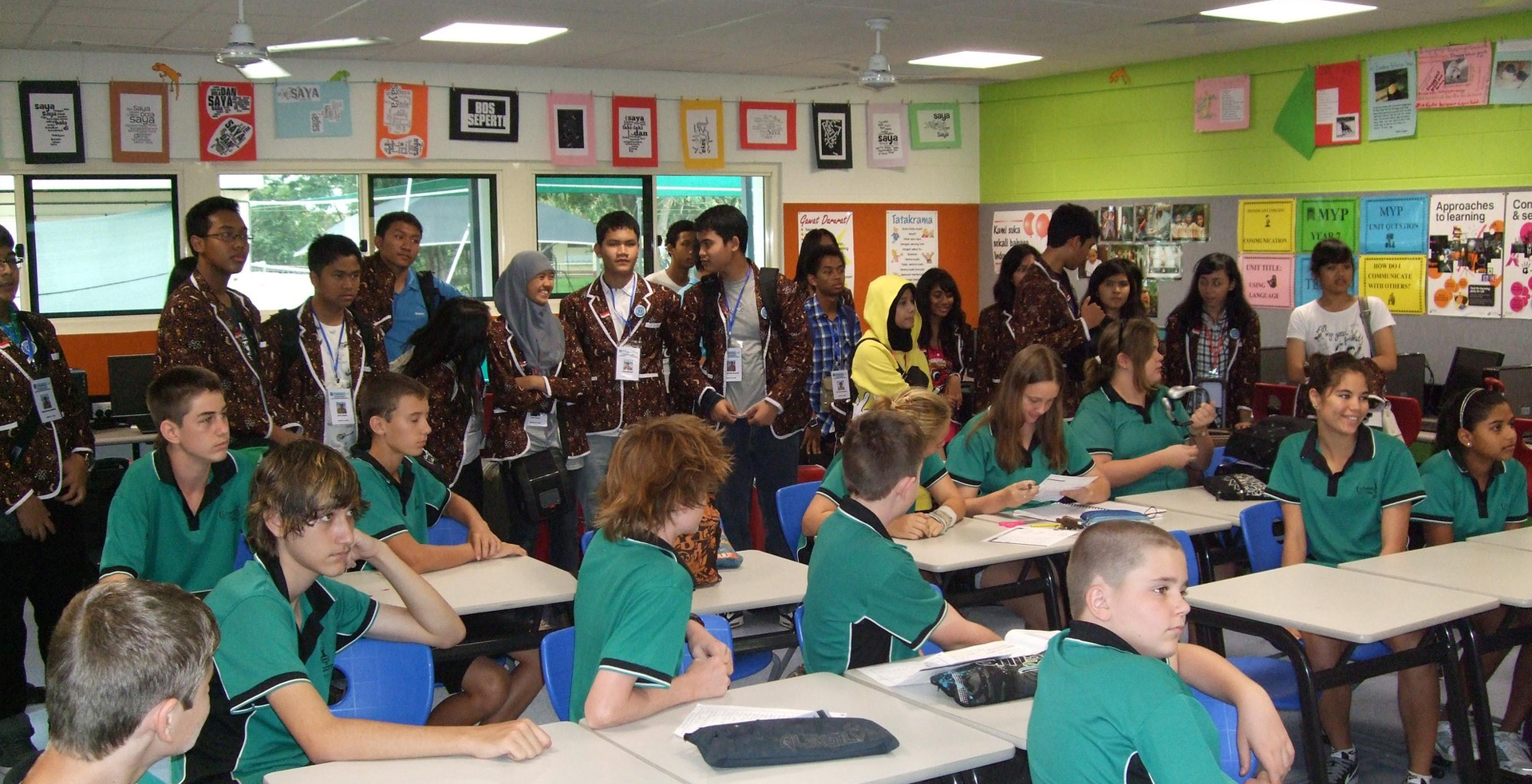SECTION 3
Read the passage below and answer questions 26-40 that follow.

Kormilda College
Section A
Kormilda College is a unique school situated near Darwin in Australia’s Northern Territory. For 20 years, to 1989, Kormilda College operated as a government-run, live-in school for high school Aboriginal students. In 1989 it was bought from the government by two Christian church groups and since then it has expanded enormously, to include a day school as well as boarders (residential students) in Years 8-12. Although 320 pupils of the College’s total number are Aboriginal students, drawn mainly from isolated communities across the Northern Territory, Kormilda also has a waiting list of non-Aboriginal students. With a current enrolment of 600, student numbers are expected to grow to 860 by 1999.
Section B
Central to the mission of the school is the encouragement of individual excellence, which has resulted in programs designed especially for the student population. Specialist support programs allow traditional Aboriginal students, who are often second language users, to understand and succeed in the mainstream curriculum. A Gifted and Talented Program, including a special Aboriginal and Torres Strait Islander Tertiary Aspirations program, has been introduced, as has an Adaptive Education Unit. Moreover, in Years 11 and 12, students may choose to follow the standard Northern Territory Courses, or those of the International Baccalaureate (LB.).
Section C
To provide appropriate pastoral care, as well as a suitable academic structure, three distinct sub-schools have been established.
Pre-Secondary: For Aboriginal and Torres Strait Islander students in Years 8-10 who are of secondary school age but have difficulties reading and writing.
Supported Secondary: For Aboriginal and Torres Strait Islander students who are of secondary school age and operating at secondary school year levels 8-12 who need specific second language literacy and numeracy support
.
Secondary: For multi-cultural Years 8-12 students.
Students remain in their sub-schools for classes in the main subject areas of English, Maths, Social Education and Science. This arrangement takes into account both diverse levels of literacy and the styles of learning and cultural understandings appropriate to traditional Aboriginal second-language users. In elective subjects chosen by the students – which include lndonesian, Music, Art, Drama, Science for Life, Commerce, Geography, Modern History, Woodwork, Metal Work, Economics and Legal Studies – students mix on the basis of subject interest.
Section D
To aid the development of the Aboriginal Education program, a specialist curriculum Support Unit has been set up. One of its functions is to re-package school courses so that they can be taught in ways that suit the students.
The education program offered to Aboriginal students uses an approach which begins with the students’ own experiences and gradually builds bi-cultural understanding. In one course, “Introducing Western European Culture Through Traditional Story-Telling”, students are helped to build a common base for approaching the English literature curriculum. Drawing on the oral culture of traditional Aboriginal communities, they are introduced to traditional stories of other cultures, both oral and written. In a foundational Year 10 course, “Theory of Learning”, concepts from Aboriginal culture are placed side by side with European concepts so that students can use their own knowledge base to help bridge the cultural divide.
Another project of the Support Unit has been the publication of several books, the most popular, Kormilda Capers. The idea for Kormilda Capers came about when it became obvious that there was a lack of engaging material for the school’s teenage readers. One
of the stories in the book, “The Bulman Mob hits the Big Smoke”, recounts the adventures of Kormilda pupils on their first visit to Sydney, Canberra and the snow country. Focussing on experiences which have directly affected the lives of students at the College, and on ideas and issues which are of immediate interest to Aboriginal students, Kormilda Capers has earned enthusiastic support within and outside the school.